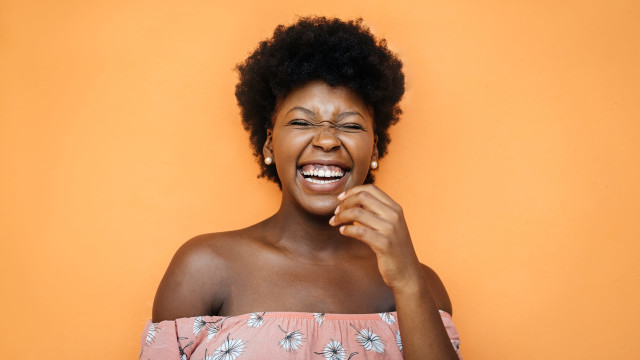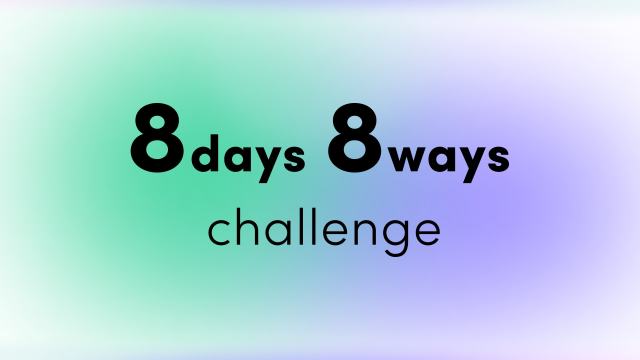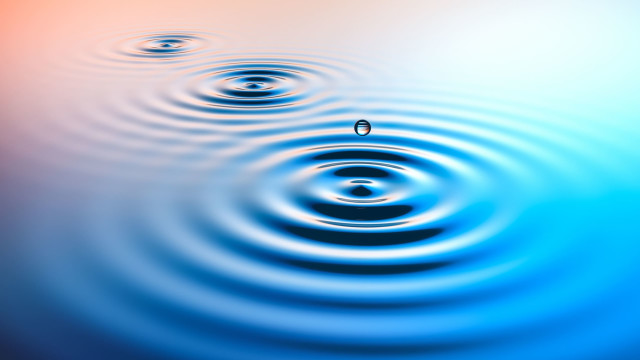Pushing Past Pain With Meditation

Before I was born, my parents immigrated to Canada from India. After countless generations in South Asia, our family was acclimating to life on a new continent. So while I grew up with a deep ancestral connection to India and its traditions, day to day I found myself immersed in a more westernized environment, somewhat cut off from my roots. It’s a typical second-generation immigrant story.
I never met half of my grandparents. I only saw the other two a handful of times — on the rare family trip to India, or the one time my grandfather (who we affectionally call “Baba”) came to visit us in Canada. My mind bent when I realized it was his first time ever seeing snow. I don’t speak much Hindi, and his English wasn't great either, so we struggled to communicate. Still, I clearly remember the time he cheated in a game of marbles to teach me a lesson he had learned in the raw hinterlands of India: The world isn't always fair.
I don’t feel too bad about any of this. The grandparents I did get to meet were always loving when we saw each other. It’s just that we didn't see each other very often. It’s a natural result of my parents taking our family halfway around the world, and I'm very thankful for the opportunities resulting from that move.
Years later when I was in my 20s, Baba passed away. When I found out, I was in an old industrial loft in Montreal where I lived and made music with four other guys. We were being typical 20- somethings, living as freely as possible and partying a lot. My brother, our drummer, was with me when we got the call. In that moment, I remember being very confused about how I was feeling. Hearing news of my grandfather’s death didn’t seem to strike me as much as it should have. Maybe I was just young, but then again, I really hadn’t known my grandfather that well, either.
Years later, my dad and I traveled to India, and he took time to take care of Baba’s affairs. We went to the house — the concrete edifice that my dad grew up in. I walked around the rooms. Everything had been cleared out. I went into Baba’s dark bedroom. It had been untouched for months. Thin strands of light were filtering through old, dusty curtains. On the wall was a photograph of my brother and me. It was a shot our parents had taken in a Sears photo studio a few years earlier.
I remember this so vividly, even though at that moment, I didn’t feel any strong emotion. Or maybe I did. I don't actually remember what I really felt back then. I just remember not thinking or feeling anything about it. In retrospect, the memory blank is a good sign that I probably felt something that I can’t recall, and I pushed it down and bottled it up.
Meditation as a Tool to Confront My Hidden Pain
Many years later, I went on my first 10-day silent meditation retreat. When you sit intensely in meditation for more than 10 hours a day, a lot of stuff comes up. I was dealing with discomfort and boredom. I felt locked in a cage with my own incessant-thinking mind.
A few days into the retreat, my focus shifted. The teacher had everyone do Adhitthana, a strong determination practice where you sit for an hour without moving. The meditation hour is meant to be spent in perfect stillness. I remember sitting there, embarrassed that I couldn’t sit on the floor very well. I’d surrounded myself with cushions, and yet I was still so uncomfortable. I sat against the wall with a literal armory of pillows to support my cross-legged posture and I was still miserable.
The retreat was led posthumously by S.N. Goenka through a recording he had made during his life. His Indian accent sounded very grandfatherly to me, and that was comforting. During the sitting session of determination, affirming statements were broadcast into the room: “You can do it.” “Sit with the discomfort.” “Notice the sensations.” “Let them come and go.” I was just beginning to understand the power of befriending discomfort.
After having spent days building up this mountain of cushions chasing comfort, I gave up protecting myself from the pain. For the second sit of strong determination that afternoon, I got rid of all the cushions except one. I sat down and promised myself I was just going to sit still, no matter what came up. If I seriously felt like I was going to hurt myself, I'd adjust position; but other than that, I quietly vowed to sit there and deal with the discomfort.
Halfway through the hourlong stillness, I started feeling intense pain: My hips and legs were aching. Then, seemingly out of nowhere, a vivid memory of being at my grandfather’s house many years ago arose in my mind. It just popped up out of nowhere, immediately followed by the mental image of the bookshelf with the picture of my brother and me. I don’t recall having even thought of this latter moment since it happened, but all of a sudden, I was flooded with an extremely precise memory. There was an unexpected power to it.
Confused, I started welling up with tears and emotion. I didn’t know what was going on, but I began feeling a lot of shame. I thought back to how little effort I’d made to connect with my grandfather while he was alive; about how I was halfway around the world when he died. Meanwhile, he had a picture of me in his room. I felt like I should have worked harder to connect with him, to be there for him. I was too busy partying and trying to be a rock star.
A Path to Healing
There I was on the side of a mountain on a meditation retreat, and all of these specific memories were pouring in and filling me with shame and sadness. And then just as quickly, all of the negative emotions galvanized a sort of energy in my body, and I felt it light up with incredible resilience. It felt as if the physical pain I had been feeling was unlocking all this pent-up energy, purifying some deeply-rooted emotions at the base of my spinal cord.
This healing energy flooded me with an image of my grandfather. I felt his strength. He was a strong individual who lived in rural Bihar — one of the poorest states in India. He had been a force that brought people together, turning a bunch of farms into a cooperative village. He was looked upon as the Zamindar (an autonomous ruler) of the area and helped build a kind of political structure where there was none.
During that meditation, I looked into his eyes and really recognized what a powerful individual he was. And at that moment, I recognized that he was giving me strength. I asked myself, “What would he do in this situation? How did his spiritual practice inform his life?” I felt a genuine connection with his essence, or at least my sense of who he was.
Even though I hadn’t intimately known my grandfather while he was alive, I recognized that he is a part of me. This moment connected me directly to his memory. I considered his strength in the face of his challenges, which put mine into perspective. Even though he was surrounded by chaos and corruption during his life, he found the determination to be a force of good and peace.
And there it was. There was the determination I was looking for. Feeling this energy of my grandfather and honoring him powered me through the determination practice, and I sat completely still, totally energized with tears in my eyes.
For the rest of the hour, I sat with him.
Along with Generational Trauma, comes Generational Wisdom
That moment taught me so much about the energy that lies within us all. I saw how negative emotions contain an energy of their own. When bottled up, they produce trauma, weigh us down, and lead to conflict. But they can also be acknowledged, purified, and translated into a power for good. I found clarity around the bonds that tie us together as a family. I saw how our ancestry can shape us. And I saw how, along with generational trauma, comes generational wisdom.
At the end of that practice, I got up, left the room, and took a walk. I was lit up with emotion. I felt an unbelievable lightness. In that moment, it was clear to me that whatever that energy I was experiencing, I had been carrying it with me for years. It was probably been living in my lower back since I first saw that picture on my late grandfather’s empty shelf in India. And now, all of a sudden, gone was this tense knot of pain, shame, and grief I hadn’t even known I was carrying.
As I looked around at this retreat center, I was in awe. This was meditation. This was spiritual practice. I understood it like never before. And ever since that retreat, meditation has been my way of life. I understood the power of the practice and how it can connect us. How it can heal us. How it can contextualize our lives in the big picture, and teach us how to operate skillfully in the world.
And I felt so light! I had finally let go of all these burdens. I let go of all this tension I didn't even know I was holding. I didn’t even know that seeing that picture in my late grandfather’s bedroom bothered me, let alone that it had become some kind of deep, emotional tangle I was holding in my body. But whatever it was, it was finally gone. It was a profound, aha moment.. And it was only one of a handful of transformations I experienced on that first retreat.
Would you believe me if I told you that on the countless retreats I’ve been since that one, they’ve all had unique insights and transformations like this? And if you believe that, can you imagine what a profound effect this practice has had on my life?
I still feel like a beginner, but moments like this have inspired me to practice for thousands of hours over the years. It's like a great book; engaging, yet mysterious. I just can't help coming back to turn the next page.
---
Now a mindfulness coach, Vidyarthi's newest practice focuses on Attention Activism, a radical act that centers on regaining control of what activities engage your brain and for how long.
Try Vidyarthi's Roundglass course, Reclaim Your Attention, to learn what tools may best help you regain focus power in this attention economy.
Header Photo by: Kevin Mcguigan / EyeEm/Getty Images
Key Takeaways:
- Meditation can be a powerful tool for helping us reconnect to lost parts of ourselves.









